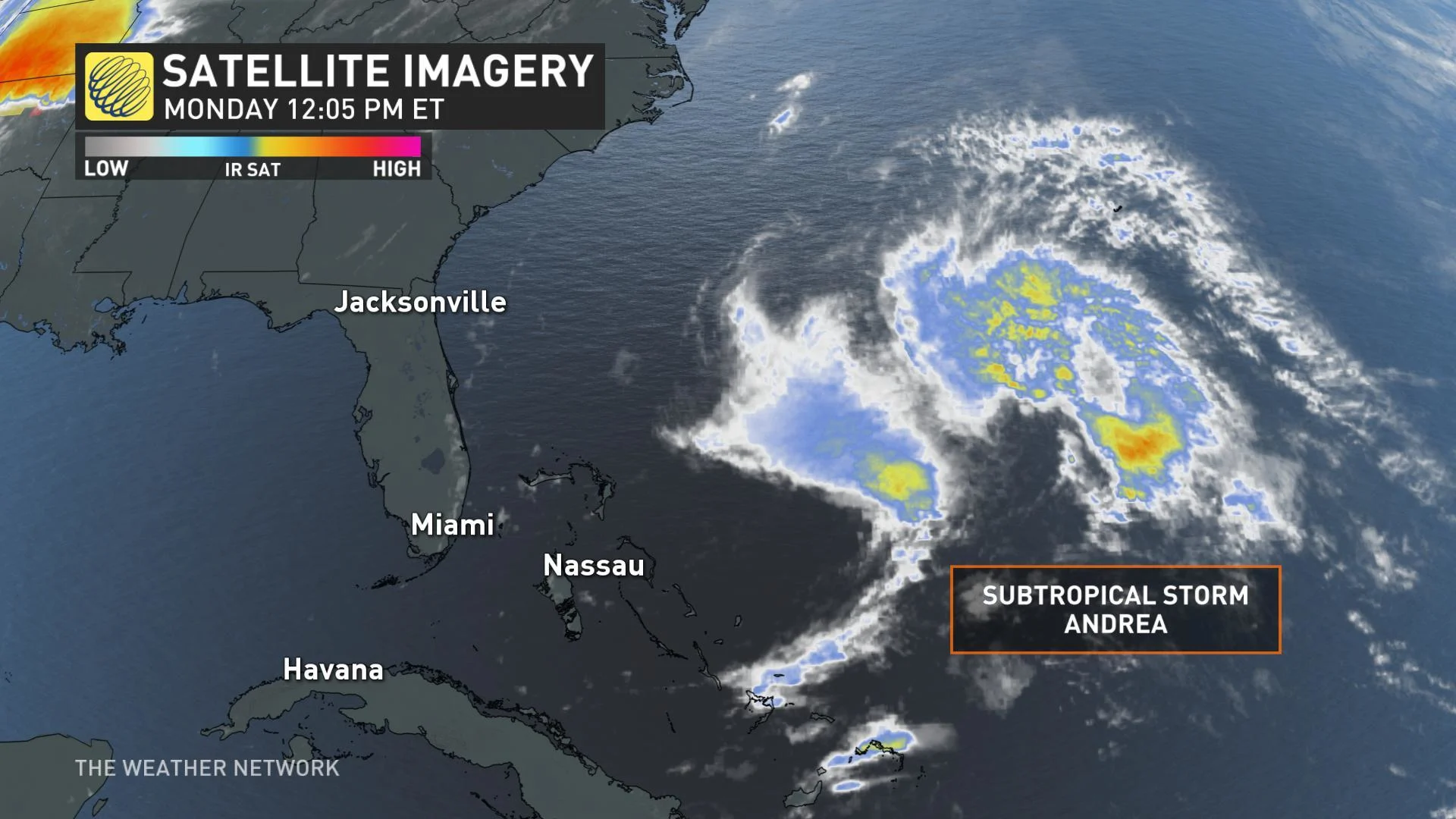
Andrea, 2019's first Atlantic storm, now post-tropical
The first named storm of the 2019 season has come and gone
The 2019 Atlantic hurricane season doesn't officially kick off until June 1, but the season's first named storm has already come and gone.
Subtropical storm Andrea "officially" came into being on Monday, boasting a defined centre and packing winds of 64 km/h.
BE PREPARED: Visit The Weather Network's Emergency Preparedness Guide
But by Tuesday morning, the storm had already moved into less favourable waters and was downgraded to a tropical depression, becoming a remnant low by the end of the day.
"The post-tropical cyclone is moving toward the east-northeast near 8 mph (13 km/h) and a turn toward the east is expected tonight," the U.S. National Hurricane Centre says. "Maximum sustained winds are near 35 mph (55 km/h) with higher gusts. The system is expected to dissipate by Wednesday morning."
The storm had no impact on land, and as of 5 p.m. Tuesday, there were no coastal watches or warnings in effect.
While many major hurricanes are born off the west coast of Africa later in the summer or early fall, these types of 'home-grown' storms that form closer to the Caribbean and North America are more common in the first part of the season as sea surface temperatures begin to increase.

Comparison of tropical storm activity between June and September. Image courtesy NOAA.
RELATED: Preparing your family and home for hurricanes
While the official Atlantic hurricane season run from June 1 to November 30 each year, statistically about 3 per cent of tropical cyclones that develop in Atlantic waters fall outside of these dates. The most recent of these was 2018's Tropical Storm Alberto, which formed near the Yucatan Peninsula on May 25.











